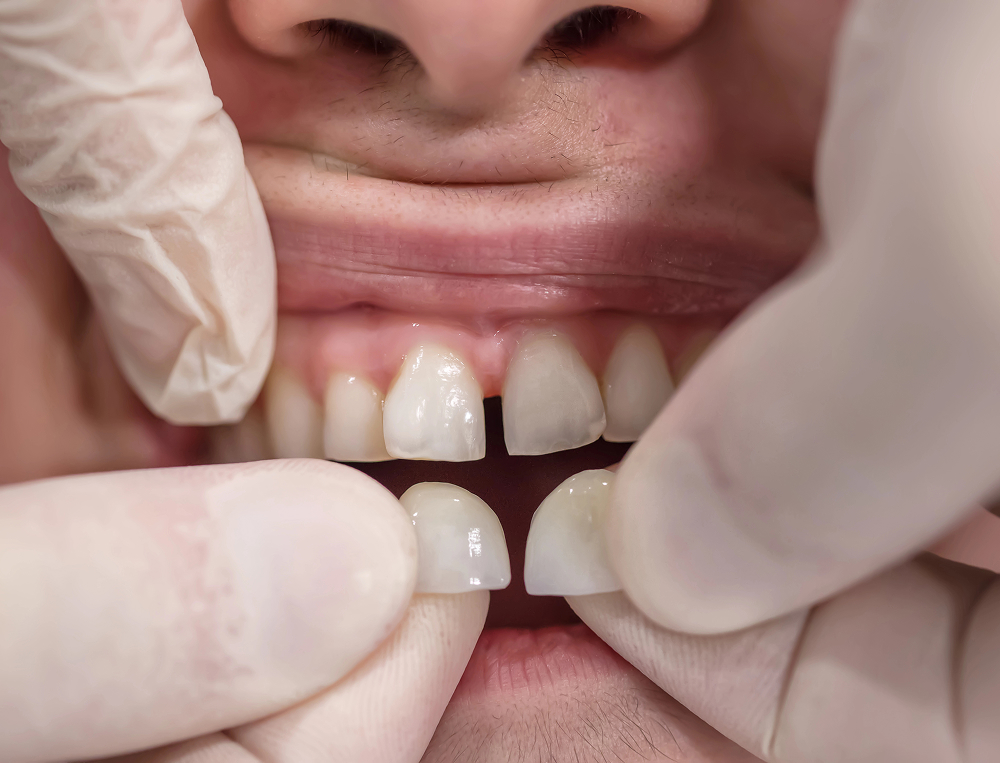Replacing a missing tooth isn’t just about aesthetics—its impact reaches bite function, jawbone health, and even long-term oral stability. While bridges and implants are often presented as interchangeable options, few discussions explore how each affects surrounding teeth, bone preservation, and day-to-day convenience for busy professionals, families, and retirees. Understanding these subtle but critical differences can help patients in Washington, DC make informed choices that support not only a confident smile but also overall oral health for years to come.
The Basics of Bridges and Implants
A dental bridge replaces missing teeth by anchoring artificial teeth to the adjacent natural teeth, which may require reshaping those supporting teeth. What’s often overlooked is that this reliance can affect the long-term health of the neighboring teeth, potentially increasing wear or sensitivity over time. In contrast, a dental implant replaces both the tooth and its root by integrating a titanium post directly into the jawbone. This stimulates bone preservation and maintains facial structure. Implants can support single crowns, multi-tooth restorations, or even full arches. While bridges offer a faster, less invasive solution, implants provide a foundation that interacts with the jaw biologically, creating a difference in durability, function, and overall oral health that is seldom fully explained in typical dental discussions.
Comparing Benefits and Drawbacks
When deciding between a dental bridge and an implant, it’s important to look beyond surface-level factors like cost or convenience. Each option has unique benefits and potential drawbacks that can affect long-term oral health, function, and aesthetics. Many patients are surprised by the subtle, yet impactful differences that rarely get discussed in general dental conversations.
- Durability and Longevity
Bridges typically last 10–15 years with proper care, while implants can last 20 years or more. The longevity of an implant stems from its integration with the jawbone, which helps maintain stability and prevents bone loss—a benefit that bridges cannot provide. - Impact on Adjacent Teeth
Traditional bridges rely on neighboring teeth for support. This requires shaping or reducing healthy teeth, which can compromise their strength over time. Implants, however, do not require alteration of adjacent teeth, preserving natural structure. - Bone Health and Jaw Integrity
Missing teeth can lead to jawbone resorption. Implants mimic natural tooth roots, stimulating the bone and maintaining facial structure. Bridges do not interact with the bone, which may result in gradual bone loss and subtle changes to facial appearance. - Aesthetics and Natural Appearance
Both bridges and implants can look natural, but implants often provide better long-term color stability and alignment, especially when multiple teeth are replaced. Bridges may discolor at the edges over time or shift slightly if supporting teeth change. - Recovery and Invasiveness
Bridges usually require fewer visits and less invasive procedures compared to implants, which involve surgical placement and healing time. However, the recovery period for implants is an investment in long-term oral health and structural stability. - Maintenance and Oral Hygiene
Bridges require careful cleaning beneath the pontic to prevent decay in supporting teeth. Implants, while easier to clean around like natural teeth, need regular monitoring to prevent peri-implantitis, a condition not often discussed outside professional settings. - Cost Considerations
Initial costs for bridges are typically lower, but implants may offer better long-term value due to their longevity and ability to prevent bone loss. Long-term maintenance and replacement costs should be weighed when comparing options.
This comparison highlights that choosing between a bridge and an implant involves evaluating both immediate needs and long-term oral health implications, not just aesthetic results.
Procedure and Recovery Considerations
The procedures for bridges and implants differ in both complexity and recovery, and these differences often influence patient decisions more than cost or aesthetics. A traditional bridge usually requires minimal preparation: the adjacent teeth are reshaped, impressions are taken, and the bridge is fitted over a few short appointments. Recovery is typically quick, with only mild sensitivity in the supporting teeth.
Implants, in contrast, involve surgically placing a titanium post into the jawbone, which then needs time to integrate through a process called osseointegration. This can take several months, during which temporary restorations may be used. Because the procedure interacts directly with bone and soft tissue, healing requires careful monitoring and sometimes minor lifestyle adjustments, such as a soft-food diet and enhanced oral hygiene. While more time-intensive, this process provides a stable, long-term foundation that bridges cannot replicate.
Cost and Insurance Factors
Cost comparisons between bridges and implants often focus on upfront expenses, but long-term value is equally important. Bridges typically have a lower initial cost, as they require fewer appointments and no surgical procedure. However, they may need replacement or repairs over time, adding to overall expense. Implants involve higher initial investment due to surgical placement and materials, but their durability and ability to prevent bone loss can make them more cost-effective in the long run. Insurance coverage varies widely—many plans cover bridges more readily than implants, but some provide partial coverage for surgical procedures. Understanding both immediate costs and long-term financial implications is essential when planning tooth replacement in Washington, DC.
Special Considerations for Different Patients
Not all tooth replacement options suit every patient, and subtle factors often influence outcomes. For front teeth, aesthetics and precise alignment are critical, making implants a preferred choice for a natural look. Molars, which endure higher chewing forces, require durable solutions; both bridges and implants can work, but implants better preserve jawbone integrity. Seniors or patients with periodontal concerns may face slower healing or reduced bone density, affecting implant eligibility. Lifestyle habits, including smoking or busy schedules, also play a role—implants require longer healing, while bridges may offer quicker functional restoration. Understanding these individual factors ensures a treatment plan tailored to each patient’s oral health and daily life.
Conclusion: Making the Best Choice for Your Smile
Deciding between a bridge and a dental implant involves more than appearance—it requires understanding how each option affects your oral health, jawbone, and long-term dental function. While bridges offer a quicker, less invasive solution, implants provide durability, bone preservation, and minimal impact on neighboring teeth. Evaluating your personal goals, lifestyle, and dental history can help you make a choice that balances aesthetics, function, and long-term health. For a professional evaluation and guidance on the best tooth replacement option for your smile, visit us at District Dental Solutions or call (202) 955-5787 to schedule an appointment today.


